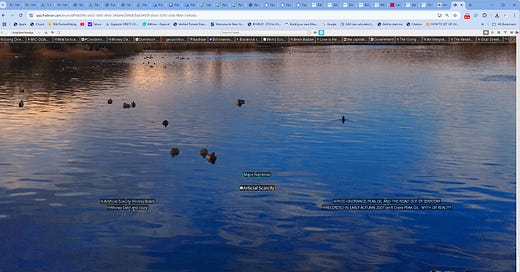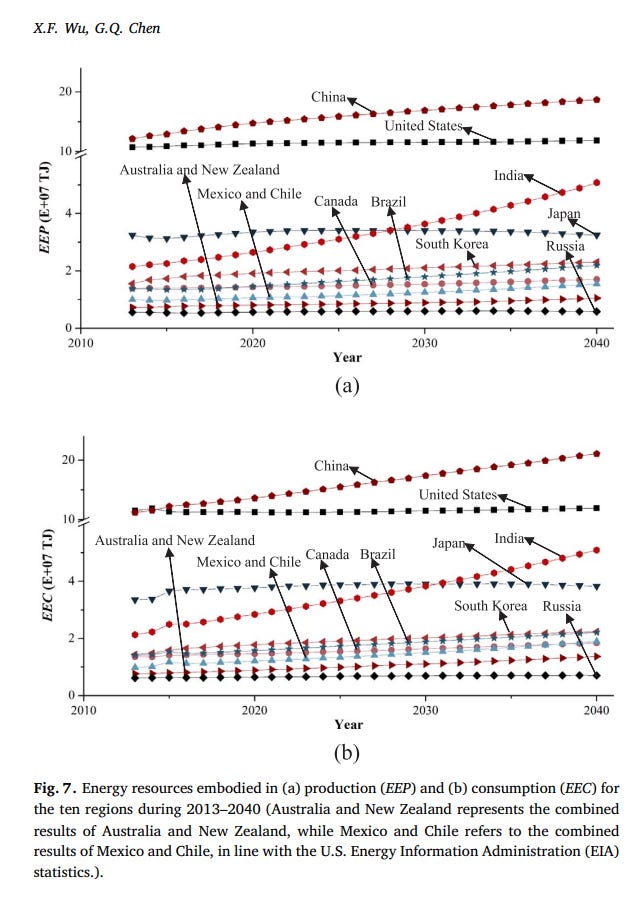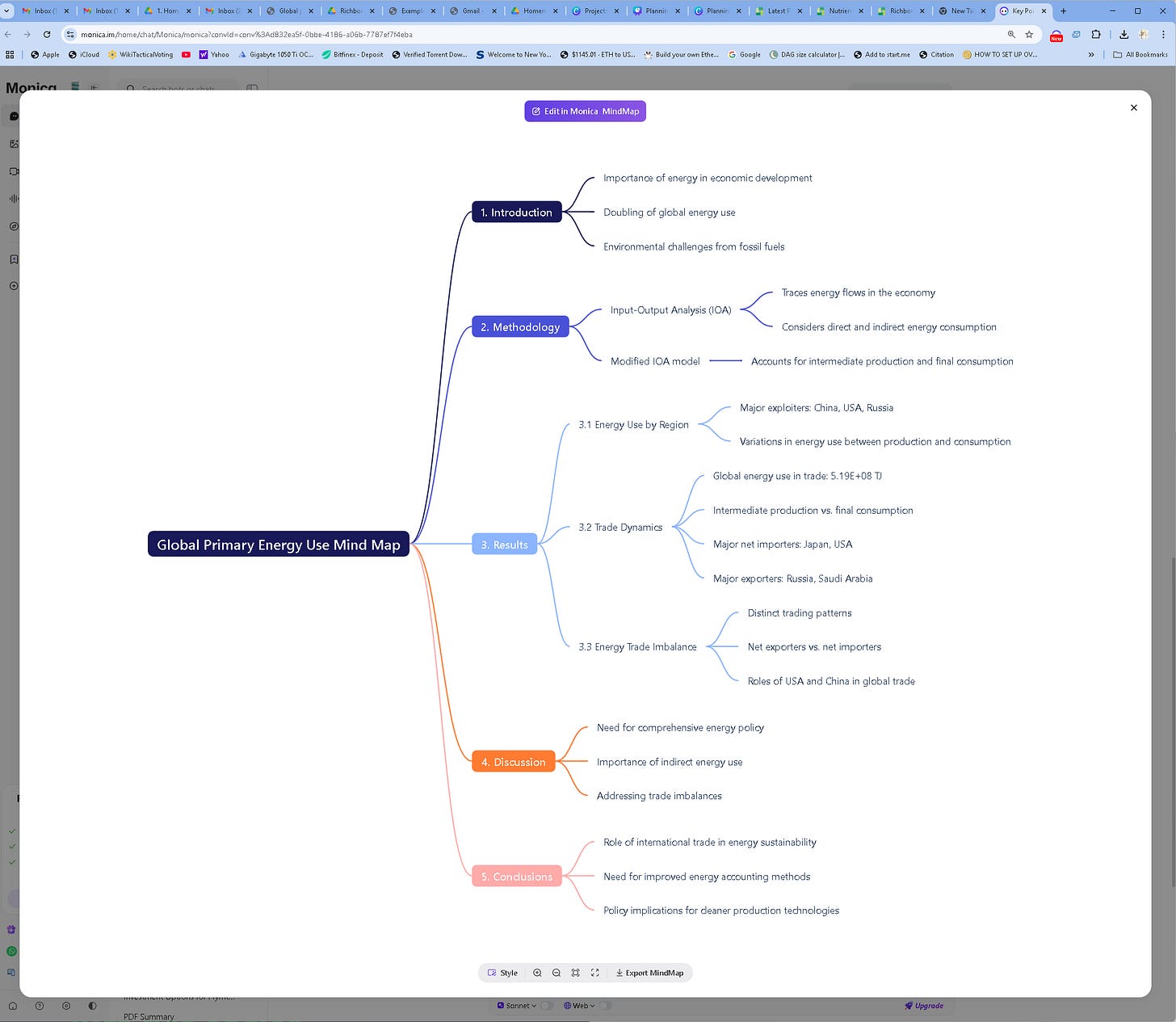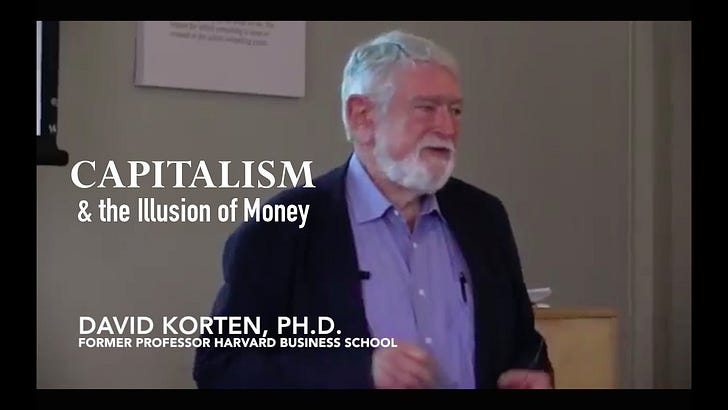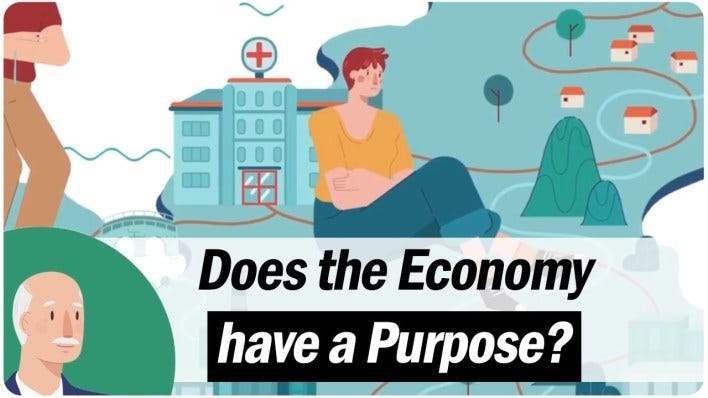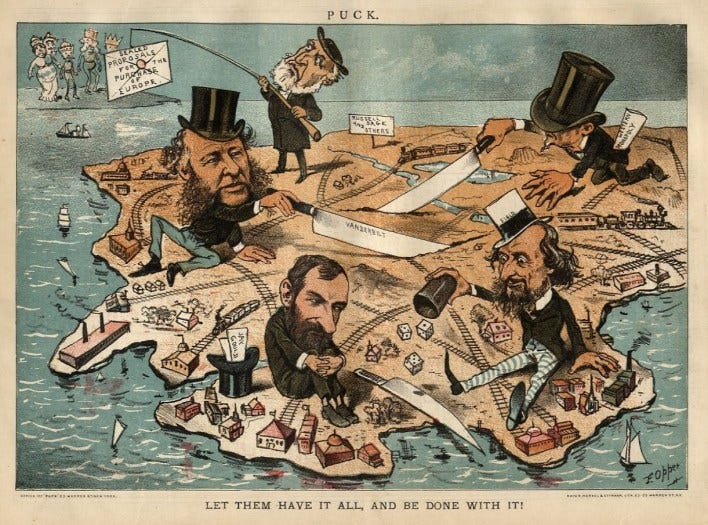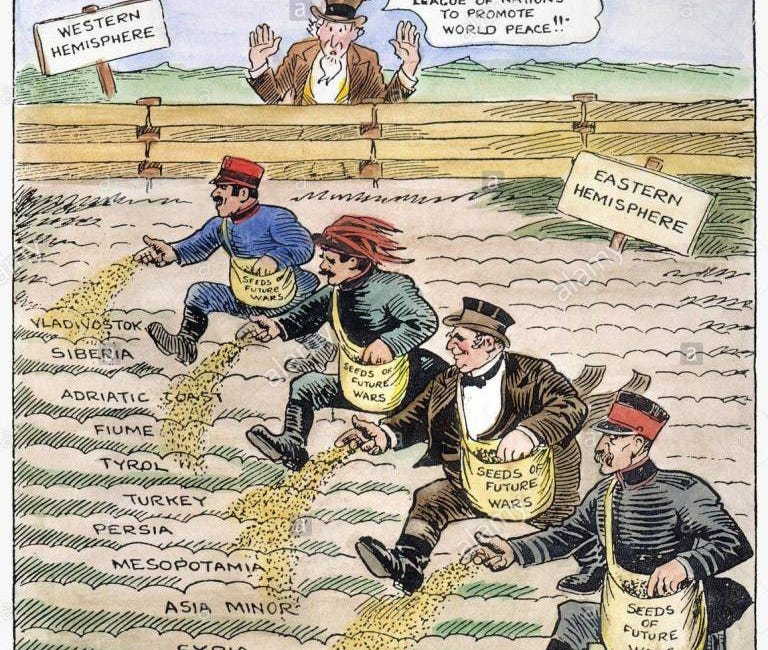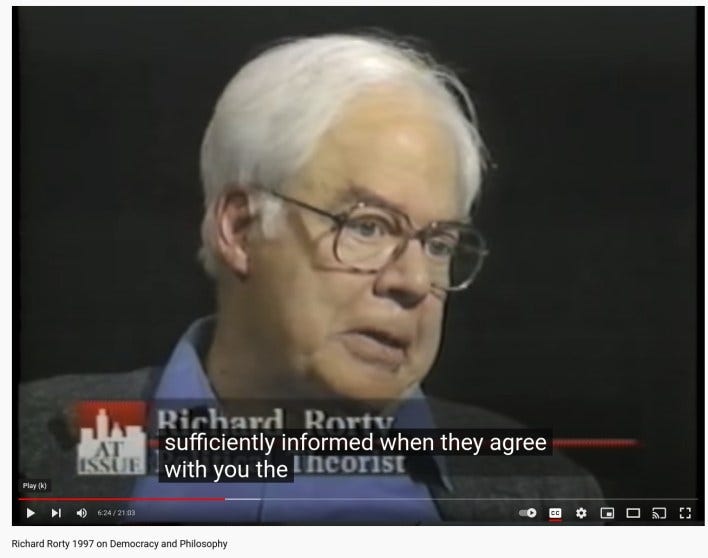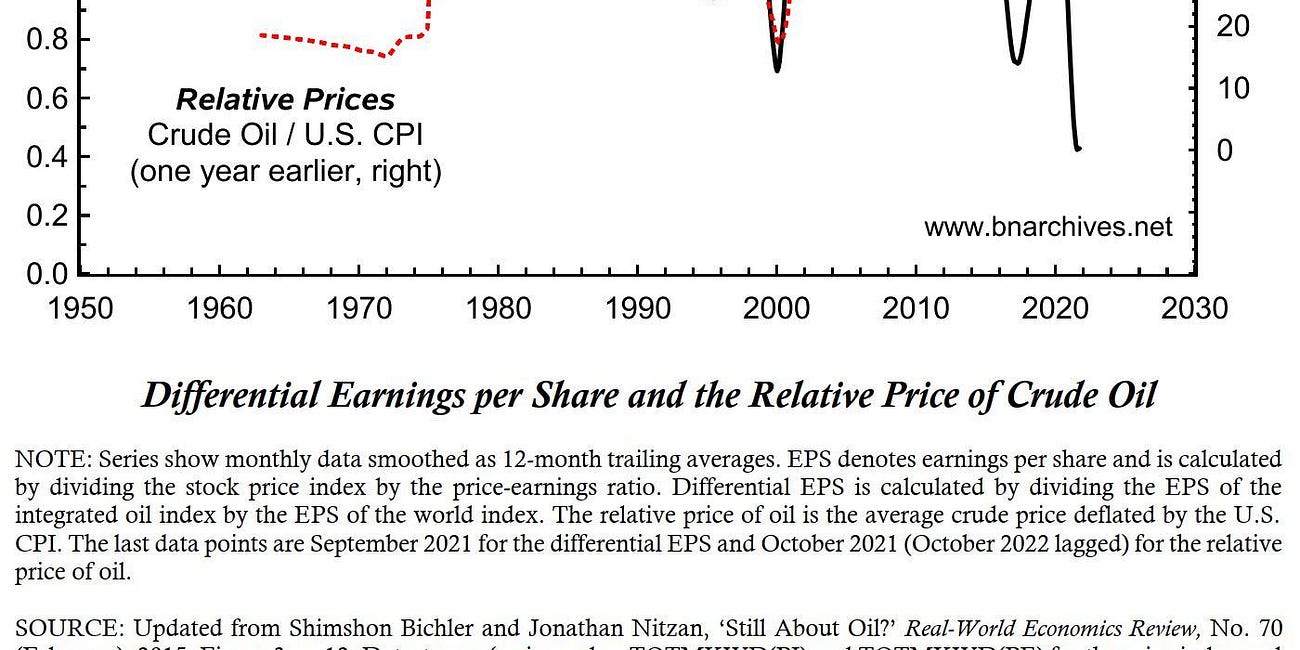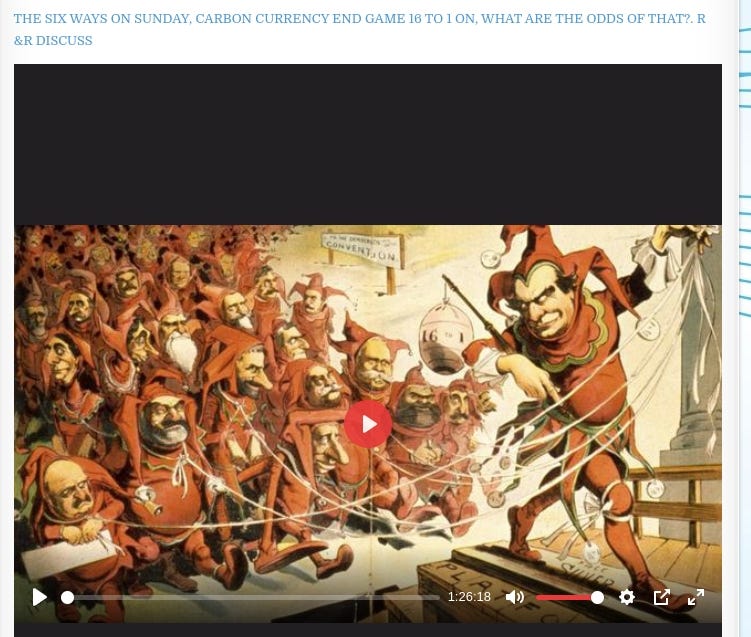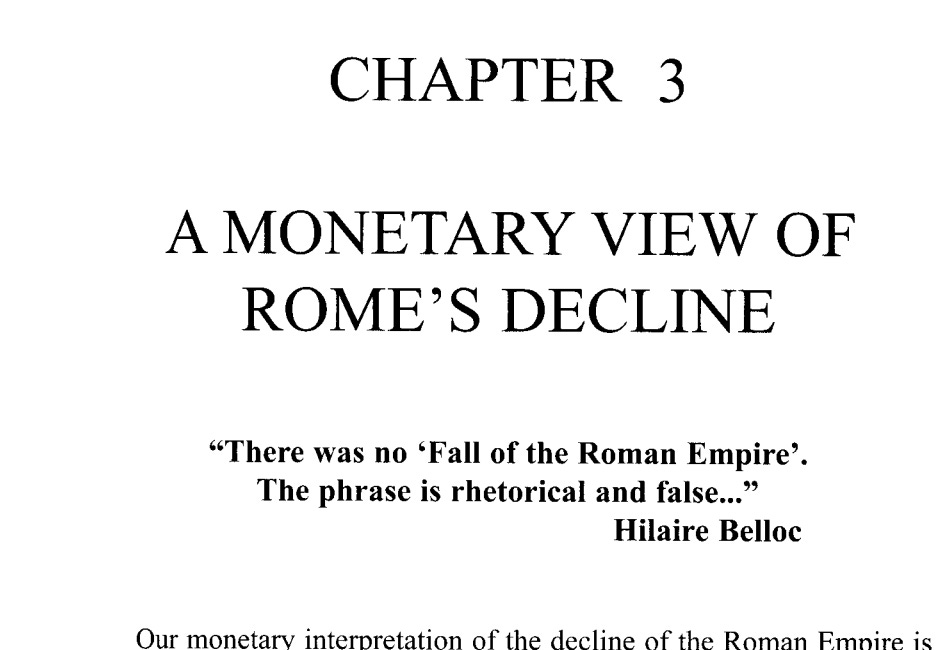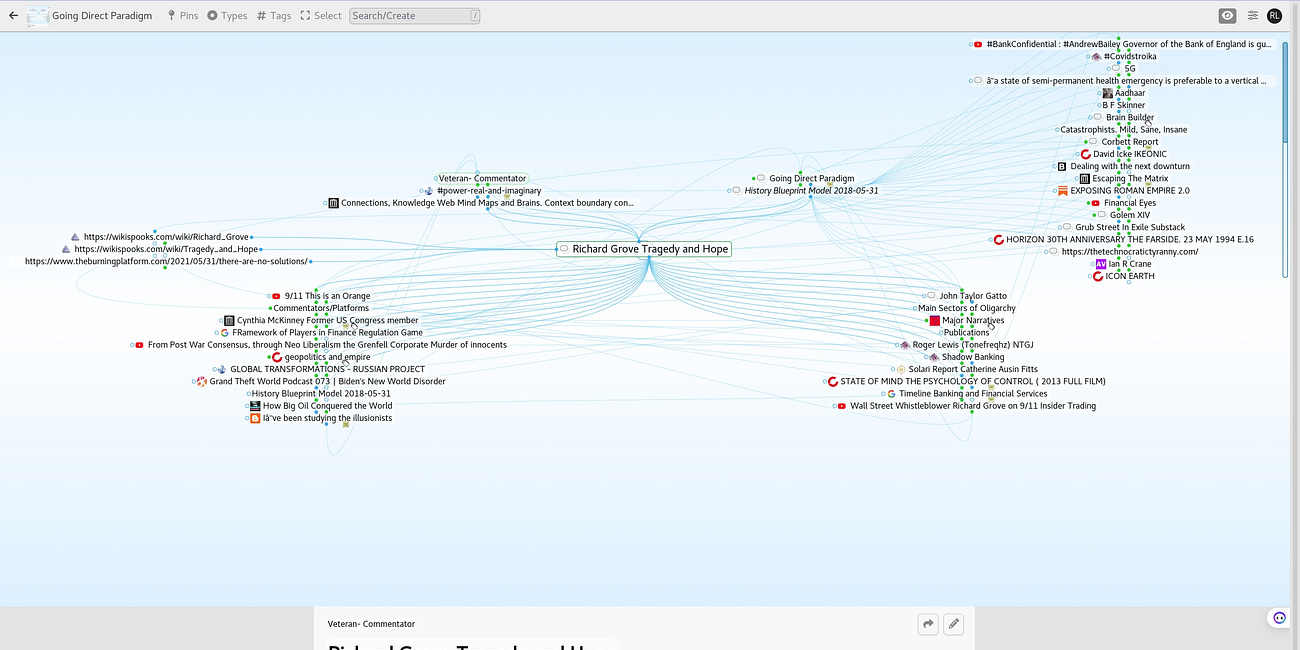Artifical Scarcity? Global primary energy use associated with production, consumption and international trade
X.F. Wua,b , G.Q. Chenb,⁎Energy Policy journal homepage: www.elsevier.com/locate/enpol
This post is again a place-holder whilst I reflect on the current push towards a Quasi Gold standard around the carbon currency end game and the going direct paradigm.
Artifical Scarcity of the monetary unit is substituted by a mythology of artificial scarcity of Energy and Resources. The Monetary unit is arbitrary in the Fiat Money system even one predicated on Gold or indeed carbon , unless that is that a fixed measure of the unit of account is established to measure a real energy value rather than an arbitrary manipulated “Market Price”
Thats what this post is for when I read the paper making up the main part of this post in 2017 it offered a window on the real wealth transfers taking place with a Lens of Energy value proxys for international trade.
233,119 views 2 Jun 2017
Shoe shiner and future President of the USA Donald Trump meets the one and only J.R Ewing.
Assasination attempts and a second Bite at the Cherry, Who’s side is President Trump batting for. Is it the people, is it big oil , is the Central Banks or is it the Mega International “Global Banks”
Piigs Ignorance, Peak Oil and The Road Out of Serfdom
Did you hear the one about the Blind Straw-man leading the Blind Straw-men. A Utopia of Usurers . the plutocratic appeal to science, or, rather, to the pseudo-science that they call
Did you hear the one about the Blind Straw-man leading the Blind Straw-men. A Utopia of Usurers . the plutocratic appeal to science, or, rather, to the pseudo-science that they call Seeds.
Value is an abstract concept and there are experiential values which exceed their Energy input where an abstract value, such as a monetary unit is allowed to reflect the Market determined price.
The fact is that there are different levels of needs and wants and over an above fundamental survival requirements, Say 2500 Calories a day including embodied energy for Shelter and dietary requirements.
What are the absolute bands of energy requirements, how much energy is Wasted and how much-embodied energy can be re-cycled that is currently wasted all have to factor into any ongoing Energy Based Distribution system and energy-based system for determining and energy-based into of account?
What is the problem with having a different type of Currency, why does Destruction of the existing unfit for purpose system have to be taken as read?
There have been successive efforts since the Nixon shock to replace the current international FInance model, that we are moving to a Multi-Polar world seems an inescapable conclusion, with all the potential problems this represents for the Dollar centric hegemony.
If it ain’t broke don’t fix it is always a good maxim but if a new design is called for to replace an obsolete system then everything is on the table.
I personally reject your four-point example and the inevitability of your conclusion Tim.
The world has tremendous potential as does the industrial capacity and also cultural and technological potentials of current technology. Of course, there are fundamental changes which need to be made The single biggest problem is the mispricing inherent in the financialised late-stage capitalism which has morphed already into Fascism, otherwise known as Neo-Liberalism.
Pierre Joseph Proudhon proposed a reform to banking which was quite simply to abolish the private monopoly on the creation of Currency as debt at interest. Peter Kropotkin describes Prouhdond Simple idea and its effect as follows,
https://archive.org/details/PeterKropotkinEntryOnanarchismFromTheEncyclopdiaBritannica/page/n1/mode/2up
Now Proudhon advocated a society without government, and
used the word Anarchy to describe it. Proudhon repudiated,
as is known, all schemes of Communism, according to which
mankind would be driven into communistic monasteries or
barracks, as also all the schemes of state or state-aided socialism
which were advocated by Louis Blanc and the Collectivists. When
he proclaimed in his first memoir on property that �? Property
is theft,�? he meant only property in its present, Roman-law,
sense of �? right of use and abuse �? ; in property-rights, on the other
hand, understood in the limited sense of possession, he saw the
best protection against the encroachments of the state. At the
same time he did not want violently to dispossess the present
owners of land, dwelling-houses, mines, factories and so on. He
preferred to attain the same end by rendering capital incapable
of earning interest; and this he proposed to obtain by means of
a national bank, based on the mutual confidence of all those who
are engaged in production, who would agree to exchange among
themselves their produces at cost-value, by means of labour
cheques representing the hours of labour required to produce
every given commodity. Under such a system, which Proudhon
described as �? Mutuellisme,�? all the exchanges of services would be
strictly equivalent. Besides, such a bank would be enabled to
lend money without interest, levying only something like 1 %,
or even less, for covering the cost of administration. Every one
being thus enabled to borrow the money that would be required
to buy a house, nobody would agree to pay any more a yearly
rent for the use of it. A general �? social liquidation �? would
thus be rendered easy, without violent expropriation. The same
applied to mines, railways, factories and so on.
In a society of this type the state would be useless. The chief
relations between citizens would be based on free agreement and
regulated by mere account keeping. The contests might be
settled by arbitration. A penetrating criticism of the state and
all possible forms of government, and a deep insight into all
economic problems, were well-known characteristics of Proudhon’s
work.
On the Continuum of Infinity what you do not set out is that we are pushing Limits? Vague claims as to Climate Heating are actually unsupported in the serious academic literature. That the Monetary system is not fit for purpose is obvious to many as you say, it seems somewhat silly though to look for solutions from the people who have continued to make an unpromising system worse over the past 30 years.
We have of course agreed to disagree before.
#121: Interpreting the post-growth economy
The problems in Political Economy as it stands presently and the question of future Political Economy based upon future Energy realities are I think helpfully separated which is something Prof. David MacKay is very successful with, in his presentation of the question.
The Problems are only weakly related with respect to future solutions and breaking the process into 3 parts is useful rather than lumping them all together. It is clear that the existing Form of Market economy and political economy is not able to solve the problem at stage 3 ( I.E Post 2050 post-Oil Economy)
Stage 1 requires a reform of the existing paradigm which involves facing up to the broken debt-based money system. Pension provision, the sovereign debt crisis and Public debt crisis are all addressable and will see improvements even within the deteriorating Cost of energy inputs as a share of output. We could call this stage lets fix what we know is not working.
Stage 2 covers the Post Financialised ( Big Bang Experiment) period to the oil running out in 2050.
This requires a much more long-term investment horizon and complicating the energy mix by overstating the �?Climate Change question** seems to be counterproductive, again I like the way Prof David Mackay dealt with the question including stating the necessities of **Clean Coal and Nuclear�?. In this stage, we will be implementing ideas previously barred due to the denial inherent in clinging to a failing system.
Stage 3 Post 2050, This part is much easier than Stage 2 and stage 1, in my opinion, the myth-busting and levelling out inherent in solving the political problems at stage 1 and the challenge to vested interests in stage 2 are by far and away the largest obstacles to getting down to Brass tacks in my opinion.
To Quote Quine, I have in mind his differences of degree and not kind in a way,
this from Two dogmas of empiricism.
´´As an empiricist I continue to think of the conceptual scheme of science as a tool, ultimately, for predicting future experience in the light of past experience. Physical objects are conceptually imported into the situation as convenient intermediaries — not by defnition in terms of experience, but simply as irreducible posits18b comparable, epistemologically, to the gods of Homer. Let me interject that for my part I do, qua lay physicist, believe in physical objects and not in Homer’s gods; and I consider it a scientifc error to believe otherwise.´´
http://www.ditext.com/quine/quine.html
Prof. Dennis Ranacourt and Dr Adrian Wriggley
CT: You discuss the need for states to ensure consent: the need to pacify, hypnotize and align populations for continued globalization; more precisely, the need to divert attention from the structural violence of economic policies and the actual violence of militarism. Can you say something about how the issue of global warming relates to this?
DR: Irrespective of whether the so-called ‘climate crisis’ is real, exaggerated or fabricated, it is clear, from the data in my report, that the ethos of global warming was engineered on a global scale and benefits the exploiters of the carbon-economy and, more indirectly, the state.
https://www.counterpunch.org/2019/06/13/from-dollar-hegemony-to-global-warming-globalization-glyphosate-and-doctrines-of-consent/
three different realist orders in the foreseeable future:
a thin international order and two thick bounded orders—one led by China,
the other by the United States. The emerging thin international order will be
concerned mainly with overseeing arms control agreements and making the
global economy work efªciently P.38
Is the present “Collapse�? Managed, Engineered, or an inevitability of Elitist Hubris?
I would argue its a combination of Premature transition management engineering, What’s known as the “Great Reset�?
Presently though Central Bank Digital Currencies a new Going Direct solution to the misdiagnosed Banking collapse of the September 2019 New York repo rate spike is being implemented.
“The BlackRock plan calls for blurring the lines between government fiscal policy and central bank monetary policy – exactly what the U.S. Treasury and the Federal Reserve are doing today in the United States. BlackRock has now been hired by the Federal Reserve, the Bank of Canada, and Sweden’s central bank, Riksbank, to implement key features of the plan. Three of the authors of the BlackRock plan previously worked as central bankers in the U.S., Canada and Switzerland, respectively.�?
https://www.blacklistednews.com/article/77171/blackrock-authored-the-bailout-plan-before-there-was-a-crisis%E2%80%93now-its-been-hired-by-three-central.html
Fig. 6. Major net inter-regional transfers of embodied energy use in (a) intermediate trade and (b) final trade (The numbers expressed by arrows, whose unit is million terajoule energy use, indicate the amounts of net flows of embodied energy use.).
Energy Policy journal homepage: www.elsevier.com/locate/enpol Global primary energy use associated with production, consumption and international trade X.F. Wua,b , G.Q. Chenb,⁎ a Economics School, Zhongnan University of Economics and Law, Wuhan 430073, PR China b Laboratory for Systems Ecology and Sustainability Science, College of Engineering, Peking University, Beijing 100871, PR China
ABSTRACT Presented in this study is a comprehensive analysis for energy use of different economic entities in global supply chains, including the exploiter, producer, consumer, intermediate trader and final trader. The systems inputoutput analysis method is adopted to trace the direct and indirect energy use associated with both intermediate production and final consumption activities in the economic system. In the world economy, 15% of the energy use embodied in trade turns out to be induced by final consumption, and 85% is attributed to intermediate production. Different trading patterns for different economies are identified with the separation between energy trade for intermediate production and that for final consumption. For Japan with a production-oriented trading pattern, intermediate trade should be a top priority in local trade structure adjustment, while final trade needs more attention for the government in the United States as the country is in a consumption-oriented trade pattern. This analysis aims to provide an in-depth insight into energy sustainability, as well as a sound scientific reference for policy making at the regional, national and global scale.
ARTICLE INFO Keywords: Energy Input-output analysis Production Consumption Trade imbalance
Monica
Here’s a summary of the key points from the document titled "Global primary energy use associated with production, consumption and international trade" by X.F. Wu and G.Q. Chen, published in Energy Policy:
Abstract
The study analyzes global energy use across various economic entities in supply chains using input-output analysis.
Key findings indicate that 15% of energy use in trade is driven by final consumption, while 85% is linked to intermediate production.
Different trading patterns are identified for various economies, emphasizing the need for tailored policy approaches.
Introduction
Energy is crucial for economic and social development, with global energy use doubling over 35 years.
The environmental impacts of energy consumption, primarily from fossil fuels, pose significant challenges.
The study highlights the importance of understanding both direct and indirect energy use in the context of globalization.
Fig. 8. Imbalance in the intermediate trade and final trade (The size of the sphere represents the corresponding economy's gross trade volume of embodied energy.).
Methodology
Input-Output Analysis (IOA): This method is used to trace energy flows in the economy, considering both direct and indirect energy consumption.
The study employs a modified IOA model to account for energy use in intermediate production and final consumption.
3.2. Energy use associated with trade
“ The global energy use embodied in trade is calculated as 5.19E+08
TJ, of which 85% is traded for intermediate production, while 15% is
attributed to final consumption. The energy use embodied in the trade
for intermediate production is more than 5 times that in the trade for
final consumption. Evidently, a partial accounting of energy use associated with final trade cannot give a complete picture of global energy
trade. For the 188 regions, energy trade embodied in intermediate
production and final consumption are quantified and presented in
Appendix C.
In the intermediate trade, Japan, the United States, mainland China,
South Korea and Germany are the largest net importers. For these 5
regions, the sectoral contributions to their imports and exports in intermediate trade are analyzed respectively in Fig. 3 to help understand
the trade structure in these regions. The 26 sectors are aggregated for
illustration purpose, with details shown in Appendix B. 74% of the
intermediate import in Japan is contributed by the import from mining
industries in other regions. Due to the critical shortage of local energy
resources, Japan imports large quantities of energy resources from
foreign regions. As the mining industry plays a key role in energy resources supply for the economic system, it becomes the major source of
imported energy in Japan. In addition, 9.70E+06 TJ of emboided energy use is exported by Japan, of which 87% is concentrated on the
industry of heavy manufacturing, including the electronic products
manufacturing industry and the motor industry, which are two pillar
industries in Japanese economy. For the United States, 5.83E+07 TJ of
energy use is imported as intermediate inputs for local production,
while 2.95E+07 TJ is exported as intermediate inputs for production in
foreign regions. The mining industry is the second largest contributor to
its intermediate export. The shale revolution in the United States has
greatly improved the relation between energy supply and demand, and
energy resources mined by the United States are gradually entering the
international market (Wang et al., 2014).
The 5 largest net exporters in intermediate energy trade are Russia,
Saudi Arabia, Qatar, Australia and Iran, which are also the 5 largest net
exporters in total energy trade, revealing the great influence of intermediate trade on total trade. The 5 regions feature a similar export
structure as their intermediate exports are dominated by the mining
industry in Fig. 3.
With respect to the trade of goods for final consumption, a different
scene emerges. Fig. 4 depicts the balance of final trade in embodied
energy use for the top 5 largest net importers and exporters. Different
from the major net importers in intermediate trade, whose imports are
mainly from the mining industry for intermediate production, the net
importers in final trade primarily import goods from the manufacturing
industry in foreign regions. The United States is the largest net importer
in final trade, with 65% of its import from the industry of heavy
manufacturing, and 26% from the industry of light manufacturing.
Hong Kong, one of Asia's highly developed cities, is the third largest net
importer in final trade, which results from its resource conditions and
economic structure. In practical terms, the supply of locally exploited
energy in Hong Kong is extremely insufficient, and most of its energy
use is imported. Moreover, Hong Kong's economy has become increasingly oriented towards the tertiary industry. Its energy-intensive
manufacturing firms have been migrated to mainland China (Chow,
2010). Therefore, among its import for final consumption, 83% are
from the manufacturing sectors.
The top 5 largest net exporters in final energy trade are mainland
China, Netherlands, Belgium, South Korea and Germany. In contrast to
the unified export structure for the leading net exporters in intermediate trade, the export markets of the net exporters in final trade
show a structural diversity. In Netherlands, the tertiary industry, including the industries of service, transport and others considered in
Fig. 4, makes up the largest component of its energy export. The tertiary
industry is usually regarded as a low-energy consumption industry, and
this is true when only the on-site energy consumption is considered.
The off-site energy consumption of the tertiary industry, however, can
be surprisingly intensive because the industries in today's economy are
highly interconnected.”
Results
Energy Use by Region:
Mainland China, the United States, and Russia are the largest energy exploiters.
Energy use varies significantly between production and consumption across different regions.
Trade Dynamics:
Global energy use in trade is calculated at 5.19E+08 TJ, with a significant portion attributed to intermediate production.
Major net importers of intermediate goods include Japan and the United States, while exporters include Russia and Saudi Arabia.
Energy Trade Imbalance:
The study identifies distinct trading patterns, with some countries being net exporters in intermediate trade but net importers in final trade.
The U.S. and China are highlighted as major players in the global energy trade.
4. Discussions
4.1. Energy use projection
In Section 3.1, the energy use associated with production (EEP) and
consumption (EEC) have been illustrated for the countries and regions
under investigation. Projection of energy use is necessary for developing national energy policies aimed at minimizing the impact from the
international market. Therefore, EEP and EEC of ten highlighted regions
during 2013–2040 are estimated in Fig. 7(a) and Fig. 7(b), respectively.
The estimation is made based on the statistics and projection (reference
case projection) provided in International Energy Outlook (EIA, 2016a),
where regional energy consumption by sectors, including residential,
commercial, industrial and transportation sectors, are recorded from
2012 to 2040. The reference case projection in International Energy
Outlook is a business-as-usual trend estimate, which reflects a scenario
assuming that current laws and regulations remain unchanged during
the projection period. To shed light on the producer and consumer
behaviors, residential and commercial energy use are aggregated as
direct energy use for final consumption, while industrial and transportation energy use are aggregated as direct energy use for intermediate production. Here, two ratios, i.e., the ratio of embodied energy
use associated with production to direct energy use for intermediate
production, and the ratio of embodied energy use associated with
consumption to direct energy use for final consumption are introduced.
The two ratios quantify the relationship between direct and indirect
energy use, which are related to the international trading pattern
thought to be unsustainable because it relies too heavily on the export and investment, but little on domestic consumption. Nowadays, China is committed to expanding domestic consumption demand, in order to create a consumption-led economy for stable economic development in the long term (Zhang et al., 2016b). Therefore, a consumption boom is predicted to come to China in the near future. Energy use in India is the world's fastest growing (Fig. 7), with India projected to replace Japan as both the world's third largest producer (EEP) by 2028 and third largest consumer (EEC) by 2031. Helped by the decline in global oil prices, India's economy has experienced a fast development in recent years (Hölscher et al., 2010), making ‘made in India’ increasingly popular in international markets, further increasing India's energy use. Although India has been assumed to follow China's development path, the two indicators of EEP and EEC show that Indian consumers dominated their economy by 2014, vs 2028 projected for China's economy (Fig. 7).
4.2. Energy trade imbalance
Discussion
The findings underscore the necessity of viewing energy use in the context of both intermediate and final trade.
The study advocates for a more comprehensive approach to energy policy that considers indirect energy use and trade imbalances.
Conclusions
The research emphasizes the role of international trade in energy use and sustainability.
It calls for improved energy accounting methods to better understand and manage energy resources globally.
Policy implications include the need for high-income countries to support cleaner production technologies in developing nations.
Acknowledgements
The research was supported by various funding sources, including the State Key Program for Basic Research and the National Natural Science Foundation of China.
This summary encapsulates the main themes and findings of the study, emphasizing the intricate relationship between energy use, trade, and policy implications in a globalized economy.
China Lays Down Gauntlet in Energy War: the geopolitics of oil, Central Asia and the United States By: F William Engdahl
The Going Direct Mindmap <====CLICK LINK
What is the Purpose of the Economy MARCH 16, 2023
What is the Purpose of the Economy? #ArtificialScarcity #TaxFarming #FinanceTailWagsCommunityDog #WagTheDog #Stupidlosophy to #CanofWorms #Aadhaar #
QED Post Climate Change, Land Use and Monetary Policy, The New Trifecta.
Doubling Back I often find it somewhat more productive than doubling down.
“QUOD ERAT DEMONSTRANDUM”, DOUBLING BACK TO MAKE SENSE OF THE DOUBLING DOWN, DOUBLE SPEAK AND DOUBLE PLUS GOOD, BEWARE THOUGHT CRIME AHEAD!
This famous cartoon shows The Golden Tail ( Store of Value) wagging the Silver ( Means of Exchange Dog ) it is from 1896
Manipulation, The Money Changers. We are Stardust, We are golden We are Billion Year Old Carbon.
“We are Stardust, We are golden We are Billion Year Old Carbon”.
VLAD THE BAD, THE IMPALER AND TYRANT Written March 2019
I posted a note yesterday referring to this joke.
SEEDS of Distrust
https://surplusenergyeconomics.wordpress.com/2024/04/02/274-the-elusive-pursuit-of-trust/comment-page-1/#comment-39051
Dollar Hegenomy , Petro Dollar by any means Part 2
Translators – are false horses of enlightenment” Pushkin 57 Years young today “Translators – are false horses of enlightenment” Pushkin 57 Years young today.
There will Be Blood, Trump still Polishing J R Ewings Shoes
Land Use and Monetary Policy, The New Trifecta. Click to buy its well worth it.
END of Shoe Shine. Oil the Wheels, shine the shoes
Affordable Housing, Show me an Angle and I’ll show you an edge. #MOAB #QED
Odds and Sods
“It’s All Happening In ( LOCKSTEP!)” Meryl Nass & And(rew) Bri(dgen) On WHO & Excess Deaths -Stay Free #311
Thank you for another interesting post Dr Morgan.
The Medium is the message?
Gas Wars, Pipelines, Silk Road
It’s not the Energy Substantially but the Means of Exchange, I.e petrodollar Hegemony.
A debt-based PetroDollar has been the most powerful Geo-Political and Soft Power Tool of the Rules-Based International Order for a century or So.
The Paradigm Shift being witnessed in front of our eyes but not seen for what it is is a move to a Carbon Trading based Unit of Currency. This is a proxy for energy usage as so much energy is generated by burning carbon. It is though the social control and governance mechanism embedded within the Debt Based currency and Taxation system which the “Masters of The Universe�? are interested in maintaining.
It is Debt-based money at Interest that drives the need for Growth as the system does not reverse it only works one way.
https://www.bbc.com/news/world-europe-50875935
“None of the manuals on Economics puts a question of how a state gets wealthy; they focus on the art of getting rich within a single corporation, a single bank, or give a piece of advice to individual wealth. Nevertheless, in real life, the corporate effect proves to be achieved at the expense of some damage done to the state and society. The Russian economy has been purposely demonetized to hit one of the bottom positions in the world rating. This ‘blood’ loss was behind the collapse of all the parts of the industrial sector, and the intentionally created ruble vacuum was designed to be filled with US dollars and other monetary substitutes. There is no need at all to talk about the banking sector�? ‘development’ if we are aiming at the establishment of the financial atmosphere that would facilitate real production. Banking could ‘develop’ for the account of finance pumped out of the industry by means of the interest rate. We need to restore the functionally appropriate relation of ‘money supply to GDP’ by a ‘one-shot blood transfusion’ Etimov. prof.


